This activity seems quite simple but your child can gain fine motor skills, learn math, and even learn about natural science! Plus, you will need a nice outdoor walk by a park or forest near you to collect these beautiful autumn leaves to begin with, which gives you and your child a chance to connect with nature. Take a camera for your child to photograph all the leaves, the trees where you found them, the beautiful scenery around you (an excellent visual arts activity), and take the time to play and jump on the biggest pile of leaves you can find (gross motor play) and feel how the weight of your child’s body makes them crackle (sensory learning). We love using nature to learn at our CEFA Early Learning schools.
Best Ages for This Activity
One to four
How to Make It
You will need:
- Assorted leaves you collect outside – make sure they are not dry or they will be hard to lift up from the play dough.
- Play dough. You can make it at home using my play dough recipe.
- A rolling pin
Let’s get started!
- Go on a walk outside and take the time to play with leaves before you collect them (optional). During play, ask your child about the way the leaves feel on their hands, or how they sound when they walk over them. Chat about the scents of fall, the colours they see, the shapes of the leaves, the size of the trees and of the leaves, the different sorts of leaves and trees they find, etc. Don’t “quiz” your child, just talk about these things as if you were chatting to a friend about it. These types of conversations are the ideal way for your child to increase their vocabulary as well as they math language and math knowledge. Your child will also learn about nature, about why the leaves fall, about the trees and how many years it takes for them to be as tall as they are (if you are not sure, google is your friend here). Explore, explore, explore. Enjoy nature with your child and they will develop a lifelong love for the outdoors, and respect for the natural world. Don’t rush this part of the activity – fully immerse yourself in it!

- Take the time to take beautiful photos (on your phone is perfect) show your child how to look through a lens, how to capture what they find beautiful through a photograph. This will make a perfect visual arts activity.
- See if you find any friends amongst the leaves and find out how they live. You will at least fin a few interesting insects

- In a basket or recyclable bag, collect a few leaves of various kinds that are not yet dry. This is important because you will have to “peel” the leaf apart from the play dough to see the print, and a dry leaf will just crack and break. Out of respect for nature, only take leaves that have fallen.
- When you get home, look at all the leaves you found. This is where you could introduce math activities such as:
- Counting the leaves
- Sorting by colour
- Sorting by size
- Sorting by type/shape
- Sorting by level of dryness
- Etc.
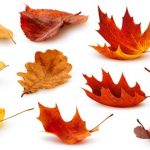
- Invite your child to make prints on play dough with the leaves they choose.
- Demonstrate if needed, or play alongside your child to show them how to do it:
- First, flatten a ball of play dough with your hands, then use the rolling pin to flatten it evenly.
- Next, carefully place one leaf, right side up, on the flattened play dough. Flatten gently with your hand.
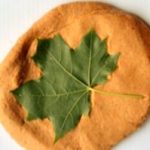
-
- Use the rolling pin to gently go over the play dough (and the leaf) without damaging your leaf.
- Lift the leaf to look at the print it made!
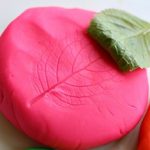
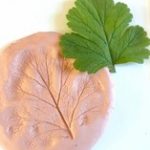
-
- Try with different kinds of leaf, and experiment mixing the pressure you apply on the leaf. Try pressing with your hands instead of the rolling pin, observe what happened (science), etc.
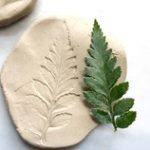
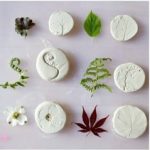
Learning Opportunities
Making an even imprint with a leaf is harder than you think for your child. It is an excellent fine motor activity. Pulling the leaf apart from the play dough also requires fine motor skills as your child has to be delicate enough not to break or rip the leaf. Your child will also learn math, creativity, art, S.T.E.M., natural science, literacy, independent play and so much more.
Extended Learning Opportunities
- Once the leaf is placed, try cutting around the play dough in the shape of the leaf before pulling the leaf out:
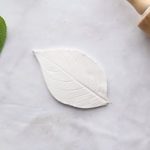
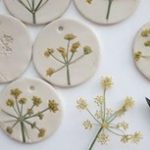
- Instead of play dough, try the same activity using clay, which dries and be painted afterwards (another fine motor skill that will help with writing) – it is a beautiful art piece.
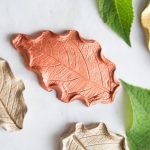
- Try threading leaves (activity here)
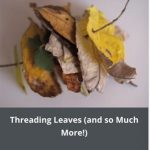
- Make a beautiful leaf collage (visual arts) with the leaves you have left
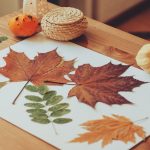
- Make a leaf garland and teach your child to tie knots (fine motor skills and practical life skills)
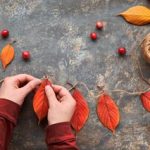
- Learn about the trees and leaves in your neighborhood, and about why leaves change colour (natural science, nature appreciation) and classify them (math)
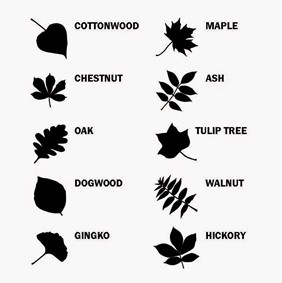
- Make a beautiful leaf mobile (visual arts) for a baby brother or sister (empathy and contribution)
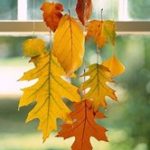
- Paint with leaves, or paint the leaf itself (visual arts and sensory activity)
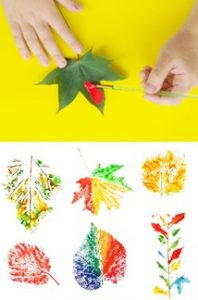
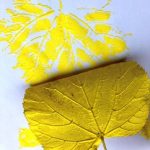
- Learn to draw the different leaves (art, math, fine motor skills – a precursor to writing)
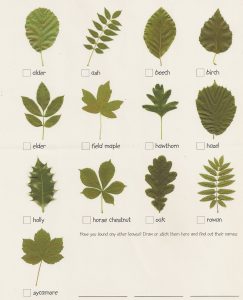
- Colour match (math)
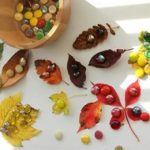
- Make graphs of your findings (math)
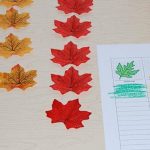
- Make your leaves come to life (dramatic arts, creative play and art)
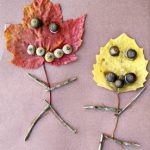
- Using the play dough, make sculptures using leaves, branches and other outdoor treasures:
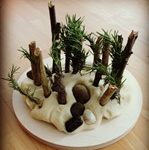
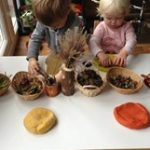
As an Amazon Associate I earn from qualifying purchases